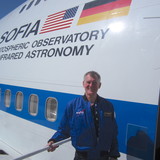Über das Buch
After surviving World War II, the USSR put the first satellite in orbit (1957) and the first man in space. They matched the US in development of nuclear weapons, and pioneered peaceful nuclear power plants. But in 1986 one Soviet reactor, Chernobyl, suffered a total meltdown, the worst nuclear disaster ever. Shortly after that, the Soviet Union disintegrated.
Russia retains most of its territory, people, and power; but most of the smaller republics in Eastern Europe have westernized, some even joining NATO and the European Union.
By 2016, the Chernobyl reactor was set to be entombed forever under an expensively built New Sarcophagus. In Moscow, Soviet space monuments now represent rockets that carry Russians and Americans too into space.
A quarter century after it ended, what of the Soviet Union is left?
Eigenschaften und Details
- Hauptkategorie: Reisen
-
Projektoption: Standard-Querformat, 25×20 cm
Seitenanzahl: 96 -
ISBN
- Bedrucktes Hardcover: 9781389897207
- Hardcover mit Schutzumschlag: 9781389897184
- Veröffentlichungsdatum: Juni 26, 2017
- Sprache English
- Schlüsselwörter Moscow, Russia, Baltic, Chernobyl, spaceflight
Über den Autor
Dr. Erıc Wegryn is a professional scientist, author and educator. After circumnavigating the planet —Round the World in 32 Days— he finished his graduate research and doctoral dissertation detailing findings from the Mars Pathfinder mission. He then relocated to the Bay Area, where he has worked with NASA and the SETI Institute on the Cassini Mission to Saturn, discovering polycyclic aromatic hydrocarbons on Iapetus. When not exploring or teaching, he is also a science author, covering space missions and solar eclipses. His travel adventures include a millennium celebration in Fiji, an Eclıpse Journey to Turkey, and a EuroSoviet incursion into Russia and Ukraine. His favorite book to write has been the amazing, true story of the Just Twelve Men who walked on the Moon.


